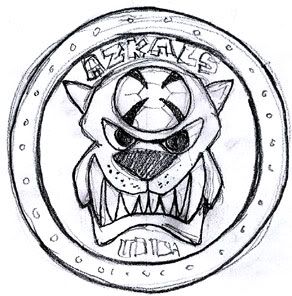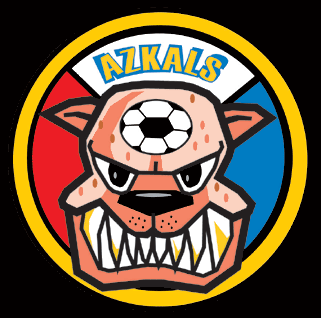The story of Azkals and the RP team
CES Drilon, (and I'm sure almost anyone else who's hearing the name for the first time) is asking why the RP team is called the Azkals. Here's a story by Noel S. Villaflor from the defunct Pinoysoccer.com website.--Mike
WHO ELSE but Filipino fans can think of naming a national football team from an animal as ubiquitous as a street dog?
The Azkals is short for “asong kalye,” Tagalog for street dog, that resilient mongrel found in most Filipino homes. (Yes, a street dog with a home. An askal without a home either ends up in the pound or the cauldron.)
Still, it is a mystery to some how the team, which is gunning for the top spot at the AFC Challenge Cup here, got such a name.
It all began in the summer of 2005, months before the Southeast Asian Games in the Philippines, when the football scene was abuzz with news that a new breed of Filipino footballers will represent the country in the biennial meet.
The fans, giddy with excitement and sick of the team being the perennial doormat in Asia, welcomed the development.
The entry of the Fil-foreigners, spearheaded by the Younghusband brothers, raised hopes for a new era of Philippine football.
As the team quickly took shape, fans who tackled the state of Philippine football in online forums discussed ways to support the team, among other issues.
One fan at the defunct Philfootball.info popped the question: what shall we call them?
Until then, the team had no moniker.
A zoo of names was put forth: Eagles, Tamaraws, even Carabaos.
Hardly any of the proposals stirred the imagination, until a forumer suggested “Askals.” The name caught on.
After lengthy online debates, the forumers decided that no other name could be more appropriate.
They agreed that the Filipino football player must possess the traits of the askal: aggressiveness, resilience, unbridled loyalty. The askal, survives, even triumphs, amid meager resources, against all odds. It transcends bloodlines.
No animal on earth equals the askal.
With a slight tweak, the “s” was changed to “z,” thus Azkals, which could also refer to “Kalye Azul,” or roughly Blue Alley. (Blue and red are the team’s official colors.)
The first time the Philippine national team was referred to as “Azkals” in mainstream media was in a sports story by football chronicler ____ on Sun.Star Cebu on July 13, 2005.
The rest is football history.
---------------------------------
Here are some versions of the Azkal drawing presented in the old Philfootball.info site.






WHO ELSE but Filipino fans can think of naming a national football team from an animal as ubiquitous as a street dog?
The Azkals is short for “asong kalye,” Tagalog for street dog, that resilient mongrel found in most Filipino homes. (Yes, a street dog with a home. An askal without a home either ends up in the pound or the cauldron.)
Still, it is a mystery to some how the team, which is gunning for the top spot at the AFC Challenge Cup here, got such a name.
It all began in the summer of 2005, months before the Southeast Asian Games in the Philippines, when the football scene was abuzz with news that a new breed of Filipino footballers will represent the country in the biennial meet.
The fans, giddy with excitement and sick of the team being the perennial doormat in Asia, welcomed the development.
The entry of the Fil-foreigners, spearheaded by the Younghusband brothers, raised hopes for a new era of Philippine football.
As the team quickly took shape, fans who tackled the state of Philippine football in online forums discussed ways to support the team, among other issues.
One fan at the defunct Philfootball.info popped the question: what shall we call them?
Until then, the team had no moniker.
A zoo of names was put forth: Eagles, Tamaraws, even Carabaos.
Hardly any of the proposals stirred the imagination, until a forumer suggested “Askals.” The name caught on.
After lengthy online debates, the forumers decided that no other name could be more appropriate.
They agreed that the Filipino football player must possess the traits of the askal: aggressiveness, resilience, unbridled loyalty. The askal, survives, even triumphs, amid meager resources, against all odds. It transcends bloodlines.
No animal on earth equals the askal.
With a slight tweak, the “s” was changed to “z,” thus Azkals, which could also refer to “Kalye Azul,” or roughly Blue Alley. (Blue and red are the team’s official colors.)
The first time the Philippine national team was referred to as “Azkals” in mainstream media was in a sports story by football chronicler ____ on Sun.Star Cebu on July 13, 2005.
The rest is football history.
---------------------------------
Here are some versions of the Azkal drawing presented in the old Philfootball.info site.






Comments
- Troy
Mike
aka
Ka Ligo